A few years ago, the concept of an “app” did not exist. Today, iOS hosts over a million apps with more than 85 billion cumulative downloads. The iOS platform delivers leverage to developers around the globe, and its enabling power has fueled its unprecedented success. This concept improves the productivity of innovation and discovery, accelerating the pace of technical advancement.
Ten years ago, consumers used watches, calculators, mp3 players, paper planners and digital cameras. Today, a smartphone replaces all of these and more (including even a bagpipe tuner – one of my personal favorites and a testament to broad app coverage). As a result, we have convenient and useful access to more functionality than ever before.
iOS shows how a platform-based approach drives massive productivity by enabling the collective genius of software experts around the world. They fully exploit the underlying hardware to create applications that cost less, are more capable and are used more than custom-built alternatives.

Figure 1 Sangiovanni-Vincentelli's "hourglass" shows the platform-based design concept.
Platforms for Design and Test
The transformative impact of platforms applies beyond our mobile devices. In the same way the iOS platform delivered unprecedented results to consumers, the modular platform-based approach is changing the way engineers are meeting industry’s most difficult test and design challenges.
The wireless industry presents one such challenge. Demands for bandwidth, capacity, responsiveness and Internet of Things (IoT) connectivity are driving 5G research. Additionally, the defense industry requires new communications technology to meet increasingly sophisticated challenges.
The scale of these challenges strains conventional design approaches because both investment and time are limited. The technical challenges associated with systems for 5G prototyping, radar research and others require a complex set of technologies that includes distributed and heterogeneous systems with real time elements, distributed networks and FPGA computation.
The increasing complexity in these systems drives the need for subsystems. These subsystems are often customized and require even more engineering resources. The higher complexity, longer integration and development time of these subsystems increases the probability of failure. The only hope for successfully designing the complex wireless systems of tomorrow, in time to meet the mounting demand, is a highly leveraged platform-based approach.
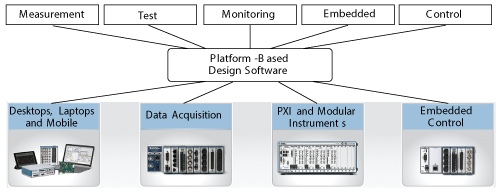
Figure 2 A software centric platform targeting multiple hardware footprints shares a reconfigurable architecture and scales to address a variety of applications.
Defining Platform-Based Design
I look to the University of California, Berkeley, to better define the notion of a platform-centric strategy. UC Berkeley has developed a methodology called platform-based design, which supports many of the key requirements needed to meet today’s challenges.
Alberto Sangiovanni-Vincentelli’s “hourglass” in Figure 1 provides a powerful backdrop to applying platform-based design. He states that “a system can often be usefully presented as the combination of a top-level view, a bottom-level view and a set of tools and methods to map between the views. The platform-based design process is a meet in the middle approach, rather than being top-down or bottom-up, because top-down design often results in unimplementable requirements and bottom-up design often results in a mess. In platform-based design, a successive refinement process is used to determine the abstraction layer.”As the hardware and software required to meet these challenges becomes more sophisticated, the benefits of a platform-based approach become more dramatic.
Platform-Based Design: A Vision
More than 40 years ago, I had a vision for a platform that would empower engineers and scientists to meet the grand challenges – from fusion experiments to smart energy to advanced wireless research. That vision has evolved to today’s productive engineering platforms that tightly integrate hardware and software to allow engineers to innovate faster. Platforms for design must retain backward compatibility while enabling rapid and innovative development. Creating such a platform for design and test requires a strong and correct vision, the discipline to maintain focus and a reinvestment model.
The platform-based approach of graphical system design, shown in Figure 2, combines off-the-shelf, reconfigurable hardware with high-level system design software to enable rapid design iteration. This off-the-shelf hardware allows the platform to stay current and deliver the highest performance and state-of-the-art computing and I/O results possible.
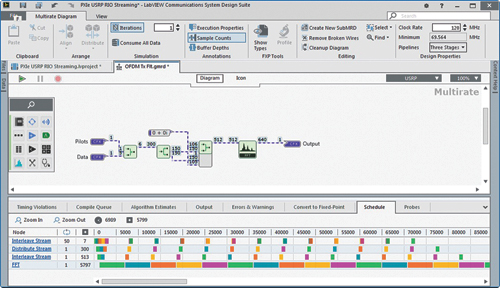
Figure 3 The LabVIEW Communications multirate diagram makes it easier to convert algorithms from floating-point to fixed-point implementations.
Although system modeling, advanced signal processing and high-level synthesis are all part of the approach, the methodology is uniquely characterized by key software abstractions that tightly integrate hardware. The system design software for enduring and productive platforms must also retain compatibility while enabling rapid and innovative productivity. Along with the need to achieve both flexibility and high performance, this is an essential characteristic of platform-based system design software.
LabVIEW as a System Design Language
Platform-based system design software will provide a flexible, highly abstracted and high performance programming environment. LabVIEW, for example, both simplifies typical design and test challenges, such as connecting to hardware I/O, and serves as a complete – actually, Turing complete – programming language. This latter part ensures the extensibility of the language to meet the most demanding engineering system design challenges.
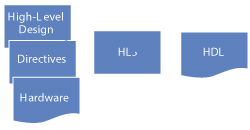
Figure 4 LabVIEW FPGA incorporates high-level synthesis (HLS) – part of the "magic" of implementing complex systems.
With a platform-based approach, engineers benefit from access to more capable and sophisticated technologies that leads to faster innovation. This approach can turn a previously difficult technology to use, the FPGA, into a flexible, high performance tool that is accessible to more engineers than ever before. High-end sophisticated system design software presents engineering system solutions in understandable, schematic-form programming and converts that view into precise code to program the FPGA.
Platform-based system design software with highly sophisticated compiler technology provides the capability to translate between schematics and complex FPGA code called VHDL. This concept continues to be invested in and expanded, delivering platform-based empowerment to engineers and scientists. An example of advanced compiler technologies is the new multirate diagram (MRD) included in the LabVIEW Communications System Design Suite (see Figure 3). The multirate diagram is an interactive tool for converting floating-point math algorithms to fixed-point implementations designed to execute on an FPGA. The MRD automatically handles typical technical challenges such as handshaking, buffering and queuing data between processes. Here, the benefit of a platform-based approach allows design engineers to use FPGA technology without requiring expertise in floating- to fixed-point algorithm conversion.
Increasing FPGA Accessibility
FPGA chips are critical technologies in advanced wireless research prototypes. They offer the performance of chip-scale solutions in clock rate and processing power with the software reconfigurability required in prototyping new, rapidly changing designs. However, the tool flows for FPGA designers have traditionally required very low-level knowledge of these chips and have not connected well with the software and digital signal processing (DSP) tools used by engineers on other design teams. This separation introduces additional complexity and cost in embracing the full use of FPGAs.
The historical complexity of traditional FPGA programming approaches prevents many engineers from incorporating FPGAs in their applications. This is unfortunate because FPGA technology has the ability to enable real time system development by:
- Providing efficient concurrent access to I/O resources with deterministic timing control
- Executing digital signal processing algorithms in real time
- Offering configurability to allow an embedded designer to explore different design trade-offs
- Increasing the reliability of certain applications over traditional processor-oriented implementations (e.g., high-speed streaming for signal intelligence)
Engineers can use LabVIEW FPGA to simplify FPGA complexity by taking advantage of more approachable software for system design. FPGAs incorporate high-level synthesis, which, in my view, is essential to implement complex systems (see Figure 4).
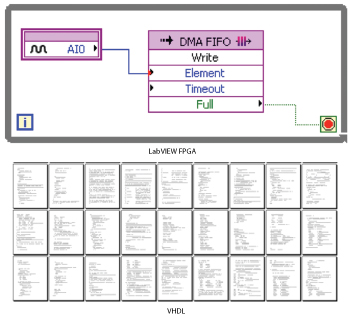
Figure 5 Modern design tools abstract operations such as connecting an FPGA to a DAC or an ADC.
Filters, encoders/decoders, and analysis functions for machine vision, control and simulation, sound and vibration, digital signal processing, and communication systems are good examples of using FPGAs to abstract various elements of a platform-based design. They can be automatically optimized without requiring knowledge of hardware description languages (HDL) or advanced optimization tricks that reduce the portability and readability of FPGA programming code (see Figure 5).
The simple operation of passing a data point from an analog-to-digital converter (ADC) to a PC requires several pages of VHDL code, but it’s expressed as a simple operation in a high-level abstraction software environment. An innovation such as higher-level FPGA synthesis is one of many examples of how platforms enable faster innovation by providing engineers with easier access to powerful technologies.
Platforms Enable Faster Innovation
One way to visualize the effect of platform-based design on engineering productivity is by comparing it with the S-curve approach and observing how each incorporates the many technologies required to complete a design. In the S-curve paradigm, system capability is defined through a series of independently developed functions that are combined to create the greater system.
Consider the example of architecting a system to conduct advanced wireless communications research. Typical systems need multiple computational elements, including DSPs/FPGAs, a CPU, a real time OS, and high performance analog I/O (DACs and ADCs). The use of each of these elements requires a high speed bus (PCI Express) for data movement between elements, as the connective tissue for the system.
Applying the S-curve concept to an unsolved challenge like wireless research means individually developing each of these subsystems and grafting them together. Each technology incurs a learning and integration investment. As a result, system capability is modeled as a series of S-curves, with a unique S-curve for each contributing technology. In some instances, design iterations often lead to reduced capability because migrating to new design tools requires design rework to retain previous functionality (see Figure 6).
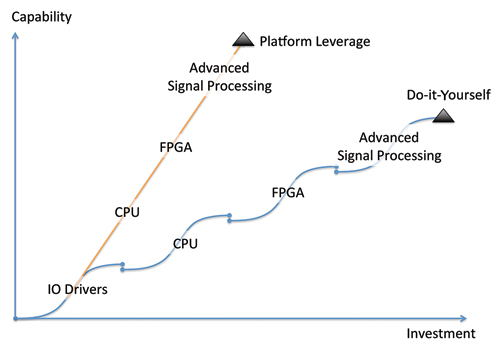
Figure 6 A simple S-curve flow applied to a platform approach makes it clear that building a solution on a platform ensures a competitive advantage.
In contrast to the S-curves associated with multiple development tools, a platform approach reduces development cost by providing platform leverage. Designers pay for the learning and/or integration costs associated with using a specific tool only once. In this case, system capability is nearly a linear function of investment; this approach enables system designers to produce more capable designs faster and with a lower investment cost.
Platforms and Advanced Wireless Research
One of the clearest examples of a platform-based approach that meets the toughest engineering challenges is in the field of wireless communications. Researchers are tasked with solving extremely complex challenges – such as 5G – with limited tools. The networks of tomorrow must:
- Offer much higher data rates – up to 1000 of today’s 4G networks
- Serve billions of heterogeneous devices – both high and low bandwidth
- Reduce latency to lower, predictable levels – on the order of 1 ms
- Provide more uniform coverage while doing all of the above.
The sheer scale and sophistication of the systems to explore 5G and other advanced concepts require engineers to adopt a platform-based approach to design. In fact, I believe that this approach is the only way to simplify immensely complex systems to the extent that engineers can innovate at the speed required to meet industry demands.
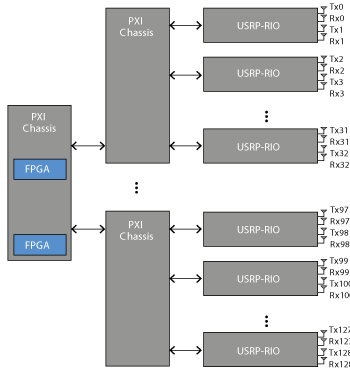
Figure 7 Massive MIMO prototype systems aggregate gigabytes of data per second into a single CPU.
Advanced, functional prototypes reveal the power of a platform at work in the real world. Though our customers are researching everything from new waveform technologies to advanced signal intelligence and heterogeneous networks, I believe the research in mmWaves, massive multiple input, multiple output (MIMO) systems and passive radar best highlights the benefits of platform-based design.
mmWave Research
Today, nearly all commercial wireless standards operate at carrier frequencies under 6 GHz. When exploring 5G research, it is clear that the spectrum below 6 GHz cannot support 1000× improvements in data rates – this range simply doesn’t offer enough free and unused bandwidth. However, millimeter wavelengths (mmWave) above 6 GHz provide plenty of spectrum that could address 5G data throughput requirements.
Although many engineers once believed mmWaves were impractical for mobile communication, recent research has shown spectrum around 15, 28, 38, 60, and 72 GHz are potentially viable options for 5G mobile deployments. These bands provide up to 2 GHz of bandwidth, which is 100× wider than existing 20 MHz LTE channels. Researchers are investigating new phased-array antenna technologies along with advanced signal processing techniques to overcome the high path loss at these higher frequencies and ensure robust communications.
Nokia Networks is currently prototyping mmWave communications systems for mobile access using a sophisticated combination of hardware and software tools. Nokia has demonstrated a working mmWave prototype capable of processing 1 GHz of real time bandwidth. A prototype of this magnitude requires a platform-based system capable of modulating extremely wide baseband signals, translating them to RF and then demodulating the same signal in real time.
The Nokia system uses multistage up conversion and down conversion in the transmitter and receiver, connected to a multi-beam, phased-array antenna capable of tracking mobile users. The baseband uses a series of FPGAs connected in parallel to process the 1 GHz of bandwidth while controlling the antenna. One of the biggest challenges was to design, develop and deploy the entire signal processing chain for the physical layer. Conventional tools would have taken much longer, but using a platform-based approach dramatically compressed the time to prototype.
To test and validate this system in a real-world network, the prototype system had to be integrated with a protocol stack (MAC layer and above). Platform-based design makes this integration process more efficient by enabling software reuse –which requires only incremental modifications rather than writing the entire software stack from scratch.
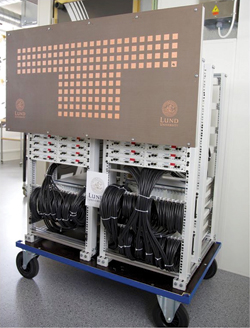
Figure 8 Massive MIMO prototype developed by Lund University.
Platform approaches such as NI’s graphical system design tools are enabling wireless research labs, like those at Nokia Networks, to prototype mmWave systems more quickly. Although the requirements of these systems forced Nokia researchers to use new technologies at data rates never before prototyped in a mobile communication test scenario, they were able to develop the system in a relatively short timeframe. Dr. Amitava Ghosh, head of broadband wireless innovation at Nokia Networks, estimated that the one year of development time it took to prototype the mmWave system was approximately half the time it would have taken with traditional tools.
Massive MIMO Research
Wide channel bandwidths make mmWave frequencies compelling candidates for 5G communications, but the challenges of signal propagation at mmWaves introduce another key research vector for 5G: massive MIMO. Massive MIMO is designed to increase data rates by transmitting the base station’s power to each user selectively rather than indiscriminately transmitting power over a geographic area. In base stations equipped with hundreds of antennas, the base station transmitters can focus the energy and track the user. In addition, with more antennas, the antenna gain can also be optimized in the downlink to improve communication, even at the cell edges.
Prototyping massive MIMO systems presents a number of challenges – in both hardware and software – from the sheer number of radios integrated into a base station. Figure 7 shows a massive MIMO prototype block diagram with 128 transmit and receive antennas. Each radio’s baseband data must be streamed to and from a common CPU, with streams from each radio synchronized in software to ensure that data from all radios can be processed in real time. The radios must be precisely synchronized, and sophisticated beamforming algorithms must be implemented in the PHY to ensure effective communication.
One significant benefit of a platform-based approach is that it simplifies synchronizing large numbers of I/O points (in this case radios). Figure 8 shows a massive MIMO prototype developed by Lund University that is capable of aggregating and distributing data from more than 100 radio channels from 50 universal software radio peripheral reconfigurable I/O (USRP RIO) devices. Despite the system’s complexity, Lund progressed from system proposal to working system prototype in only six months, which is another tangible platform leverage advantage.
Passive Radar
In addition to wireless research, engineers are applying the platform-based design concept to systems such as radar research. SELEX Sistemi Integrati in Rome, Italy, is using NI’s platform-based approach to develop advanced passive radar systems. Unlike traditional radars, which use an onboard “illuminator” to generate a stimulus signal, passive radars rely on environmental illuminators such as cell towers, satellite transmissions and broadcast stations. The principle of passive radar is to measure a signal’s direction of arrival by carefully separating the incident signal from the reflection.
Passive radar design challenges include tight phase synchronizing between large numbers of receiver channels, high throughput data movement to a CPU and sophisticated real time signal processing to implement adaptive filtering and cross-correlation algorithms (see Figure 9). In this example, one of the benefits of the platform-based approach is that it simplifies system development by enabling designers to access multiple tools through a single software experience.
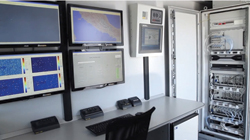
Figure 9 Complex systems such as this passive radar are designed and deployed with PXI instruments embedded into the final system.
Benefits of a Platform
For researchers designing next-generation wireless systems or engineers and scientists exploring any innovation, platforms enable the discovery of new ideas and new designs through leverage and reuse. The design complexity introduced through gigahertz of bandwidth, mmWaves, massive MIMO beamforming, new PHY layers and heterogeneous networks presents increasingly difficult challenges. Given these challenges – and the pressing timelines associated with designing the next generation of communications – using traditional, disparate tools are not an option.
For these challenges, a platform-based approach is the only viable option. As the examples illustrate, industry leaders such as Nokia Networks, Lund University and TU-Dresden know these challenges require highly sophisticated and highly integrated systems that include both hardware and software elements optimized for maximum system capability.
The iOS platform is a proven and highly valuable methodology for creating consumer applications. One example of NI’s graphical system design approach is a proven methodology for creating engineering applications. A platform-based approach requires vision, discipline and ultimately enables engineers to design their next-generation systems faster
